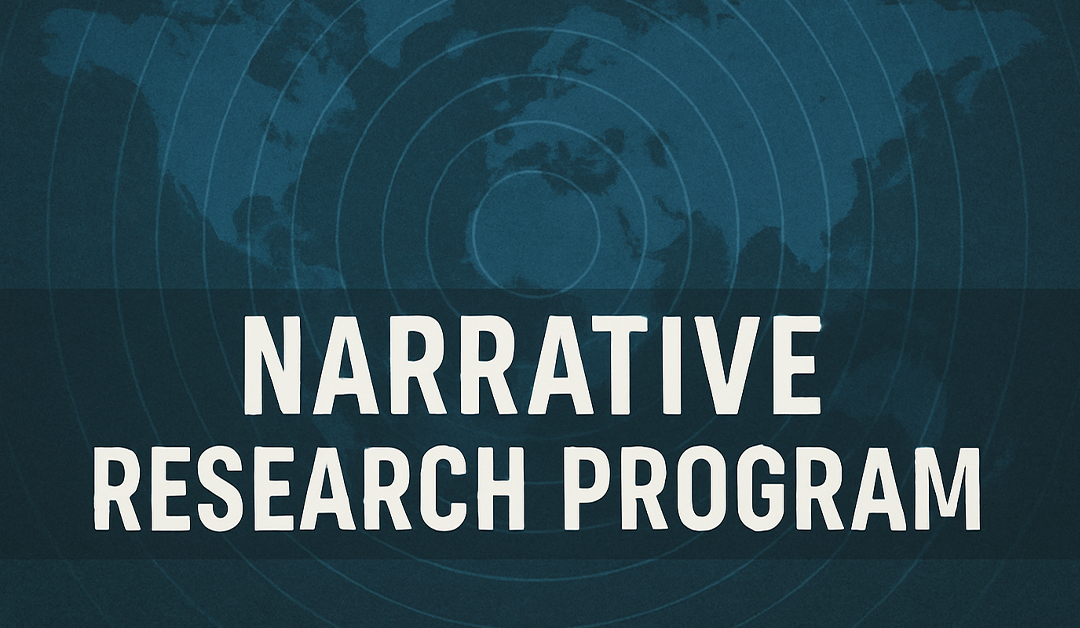During the Cold War, the CIA quietly funded a research program that aimed to do far more than study populations-it wanted to shape them.
The so-called "narrative" project outlined in this document proposed nothing less than a full-spectrum psychological map of human behavior, beliefs, and vulnerabilities across targeted groups.
The objective wasn’t public health. It was covert influence.
"It will identify persons among the group of residents who are potentially useful for intelligence purposes… and indicate the most likely areas of their usefulness."
The proposal merges psychological profiling, cultural anthropology, and operational targeting into a single agenda: find what motivates people, what weakens them, and what makes them follow.
🧪 Psychological Testing as a Cover
The program was to be conducted under the cover of a benign academic project: a “psychological survey” of displaced persons in a multilingual setting. But the real work was covert identification:
-
Who can be recruited?
-
Who can be influenced?
-
Who poses a threat?
To encourage participation, the CIA planned to provide stipends, fellowships, or training opportunities to subjects. In other words: buy consent and monitor behavior.
🧍 Mapping Behavior for Strategic Gain
The document outlines several specific aims:
-
Compile knowledge of psychological and cultural forces at play in a target group
-
Identify internal psychological drives that can be redirected
-
Measure future performance potential in operational situations
-
Categorize individuals by susceptibility to influence, defection, or manipulation
This wasn’t theoretical research. It was groundwork for human exploitation.
💊 Chemical Agents and Psychological Influence
In a parallel section, the proposal pivots sharply to discuss the use of chemical agents for:
-
Attitude change
-
Memory suppression
-
Behavioral control
It explicitly describes plans to test such agents on both laboratory animals and human volunteers, evaluating their use "against the agency’s adversaries."
"It will define the area of usefulness of chemical agents, and develop methods for counteracting their effects."
This dual purpose-offense and defense-suggests the CIA was just as interested in protecting its own operatives from chemical compromise as it was in deploying these tools against others.
🔍 Non-Chemical Influence Strategies
Beyond pharmacology, the project would investigate:
-
Brain damage
-
Sensory deprivation
-
Hypnosis
-
Cultural isolation
-
Coercion via reward or humiliation
-
Social pressures embedded in community groups
It describes these as "standard and non-standard methods," placing equal weight on psychological warfare and environmental control.
🧾 Agent Profiling and Recruitment Science
The research team would also build a database of traits and patterns observed in successful and failed intelligence agents, asking:
-
What kind of person defects?
-
Who becomes a double agent?
-
What stress conditions lead to breakdown or loyalty shifts?
The goal: develop a predictive framework for agent selection, conditioning, and long-term reliability.
"It expects to develop criteria and methods for the selection and development of successful agents."
🧬 Total Environmental Monitoring
The document emphasizes the need to track physical, emotional, and environmental factors, noting that "accumulated knowledge" of bodily adaptation and psychological response to stress must be included.
CIA staff were expected to:
-
Review current scientific literature
-
Attend conferences covertly
-
Incorporate any relevant data into new operations
This wasn’t a program of isolated lab tests. It was global psychological surveillance, turned inward and outward.
🕳️ Behavioral Science as Intelligence Infrastructure
The "narrative" wasn’t about storytelling. It was about story engineering.
The CIA wasn’t simply collecting data-it was building systems of perception, loyalty, and belief to steer entire groups toward American objectives.
This document doesn’t describe a mission.
It describes a mindset.






